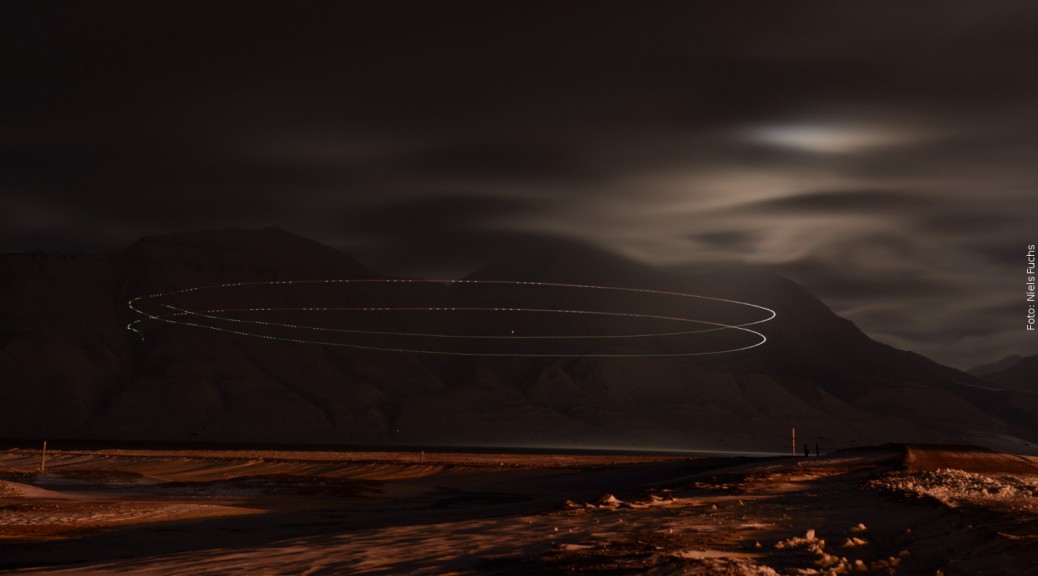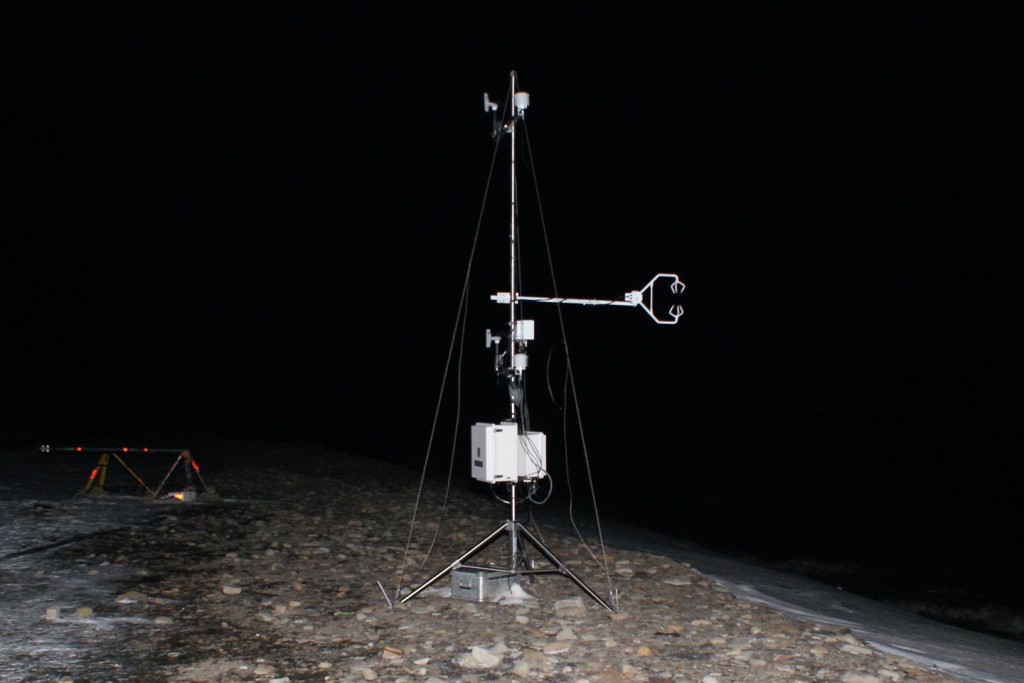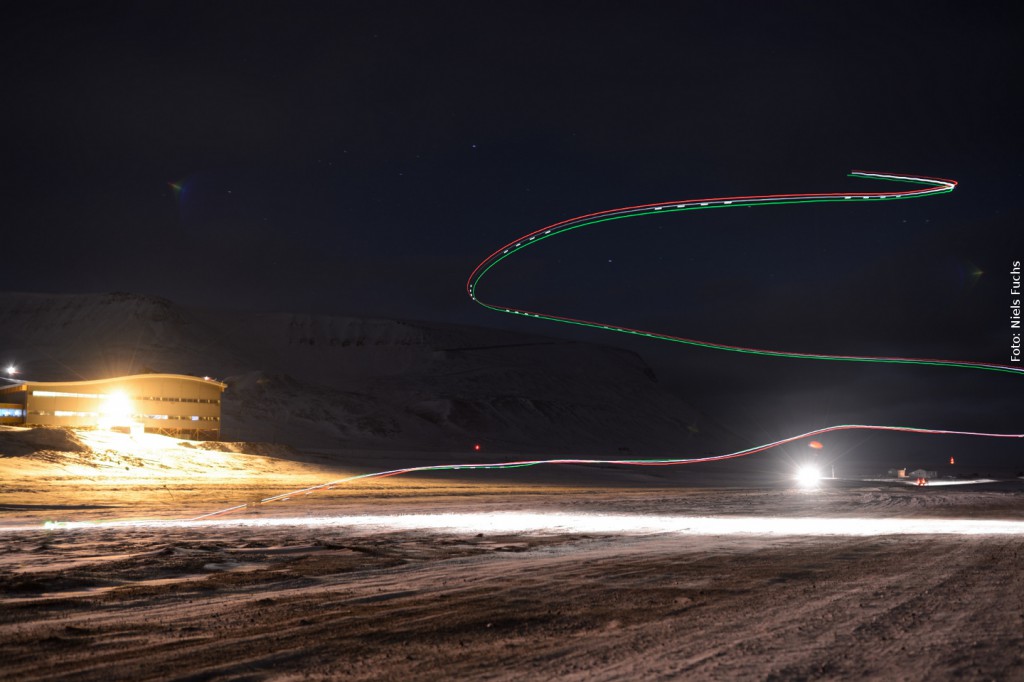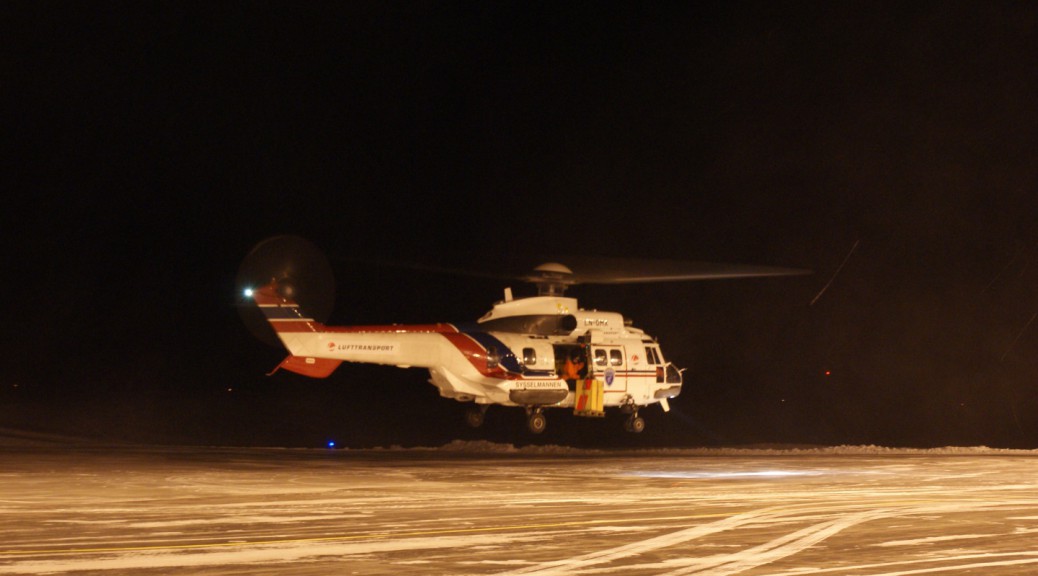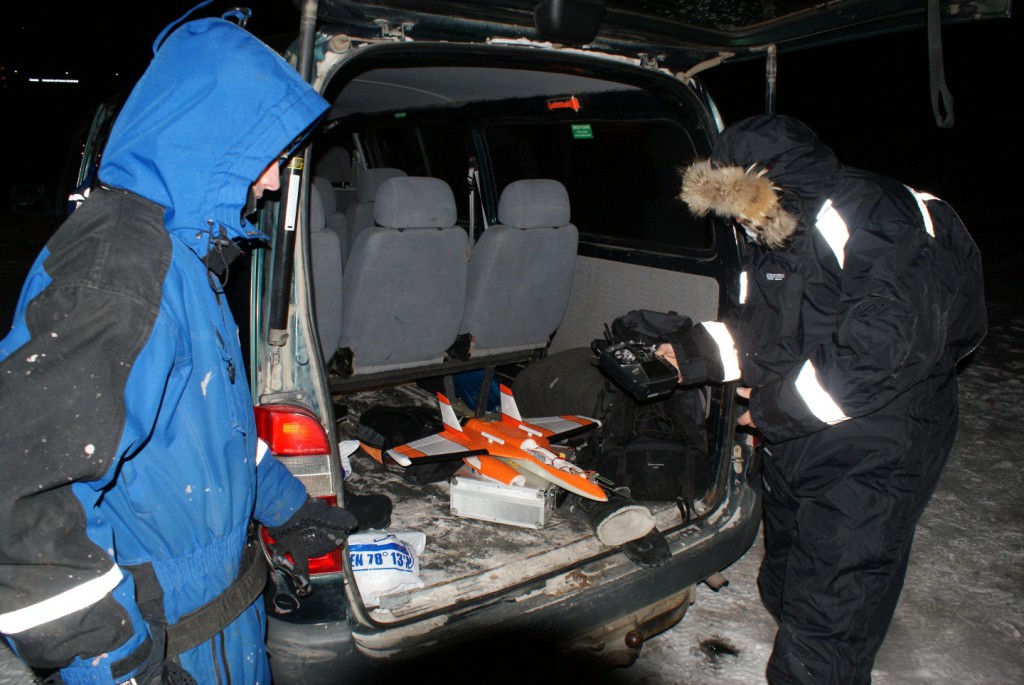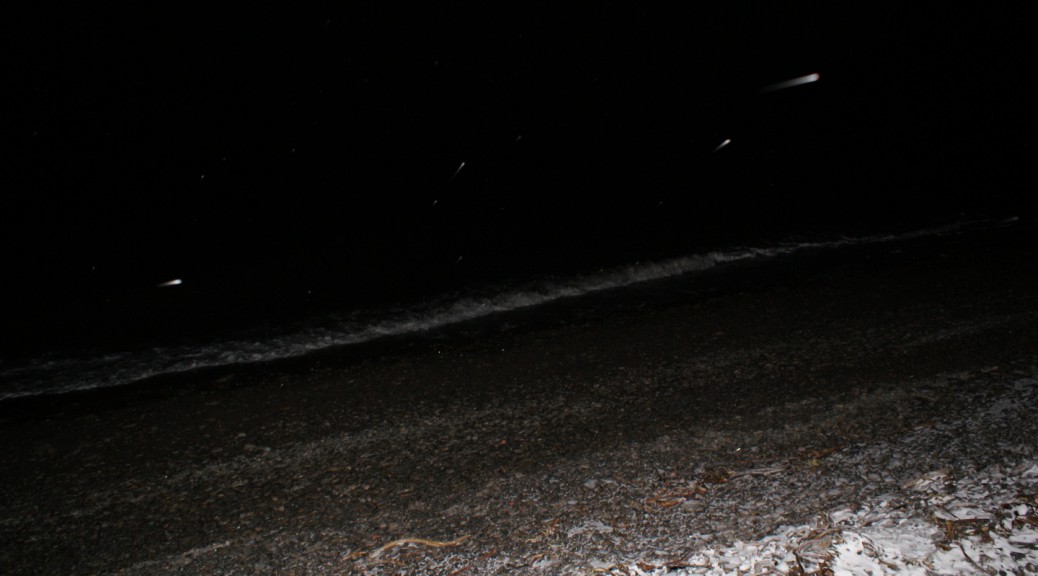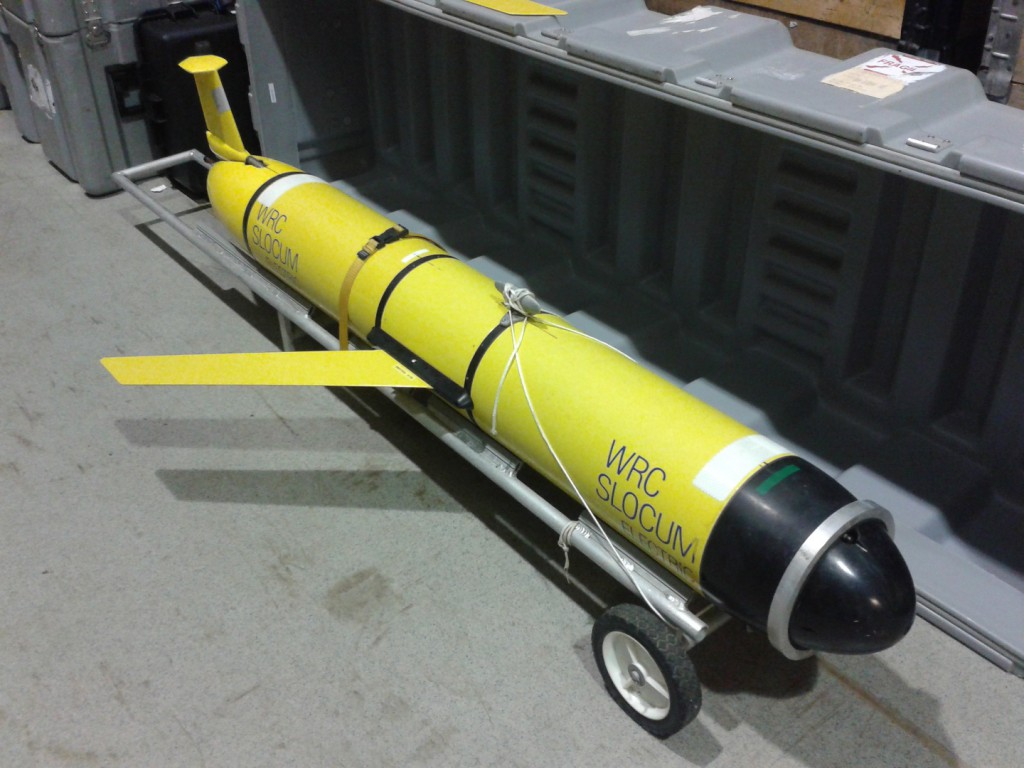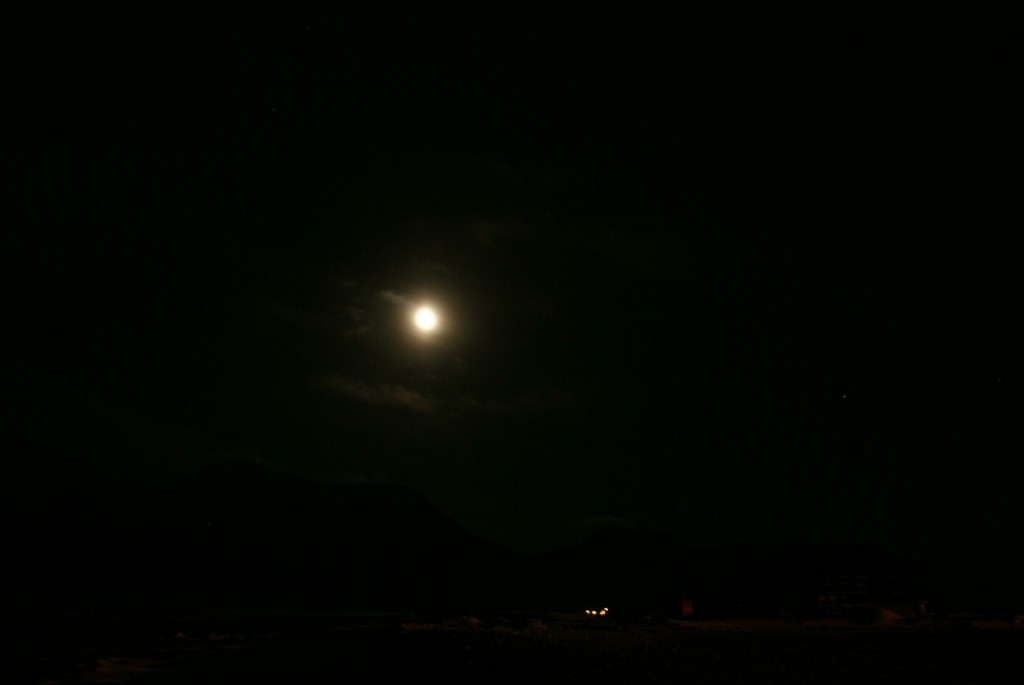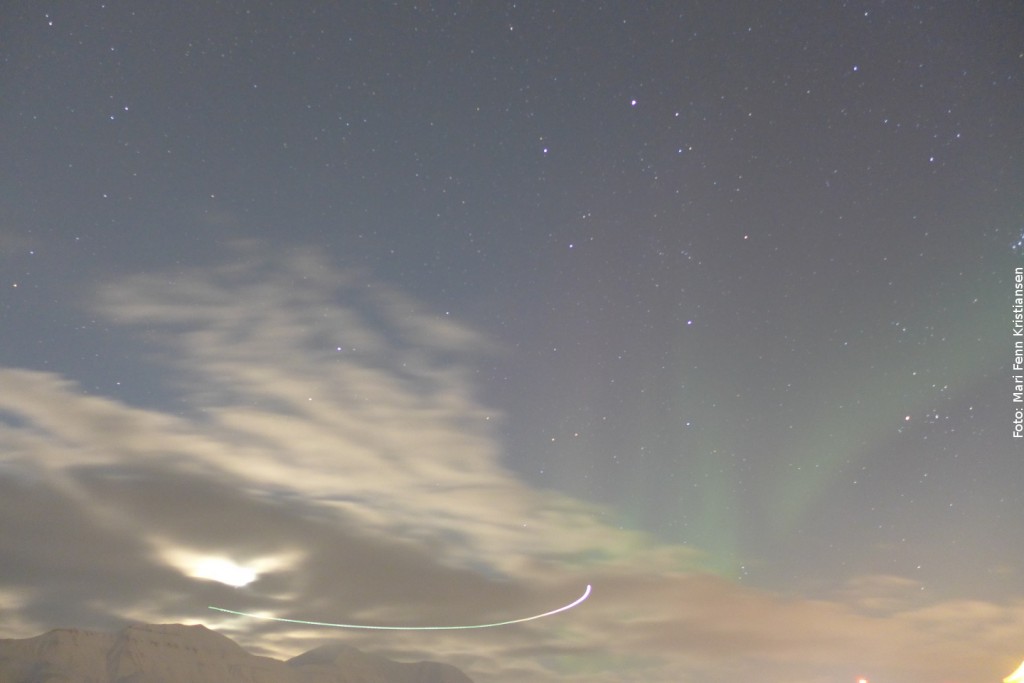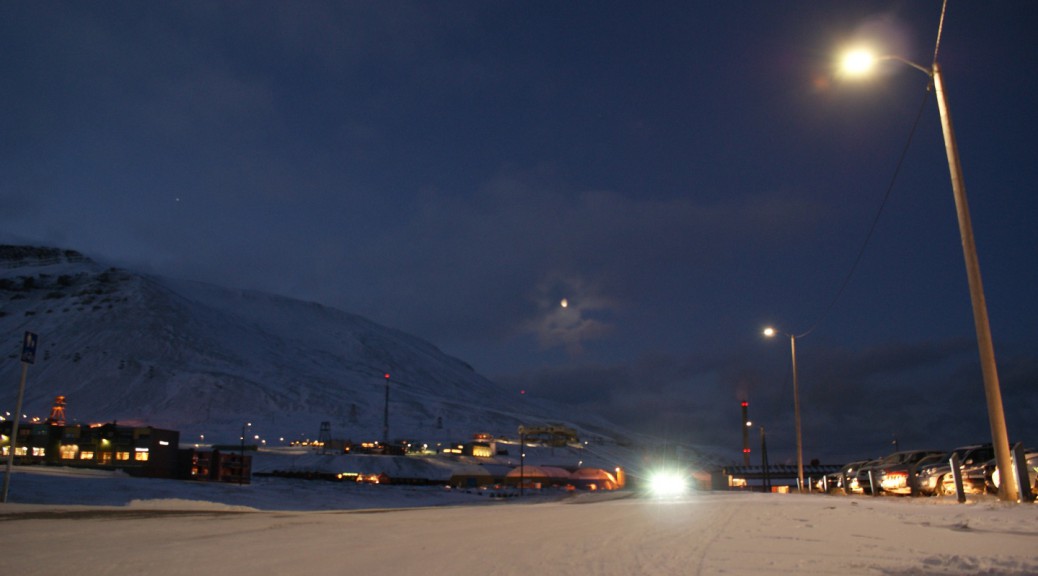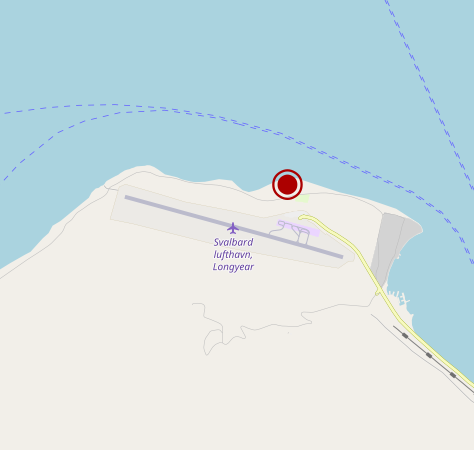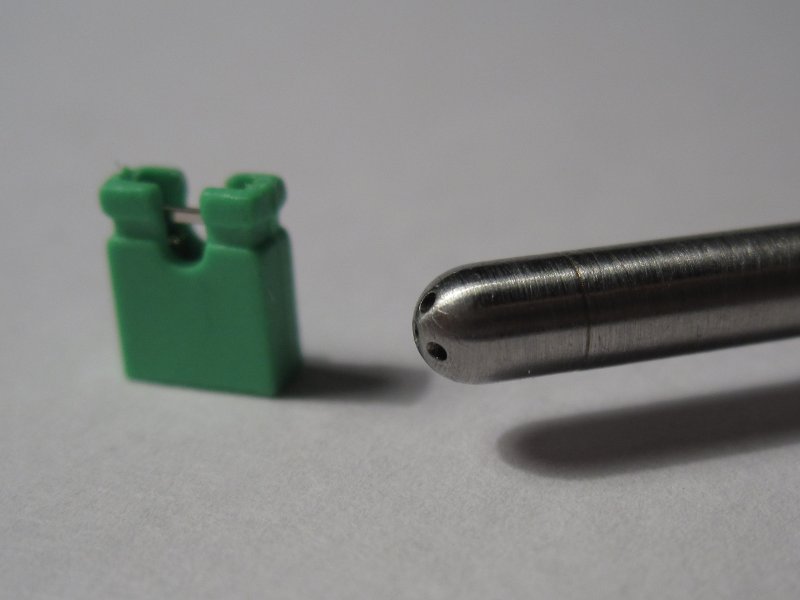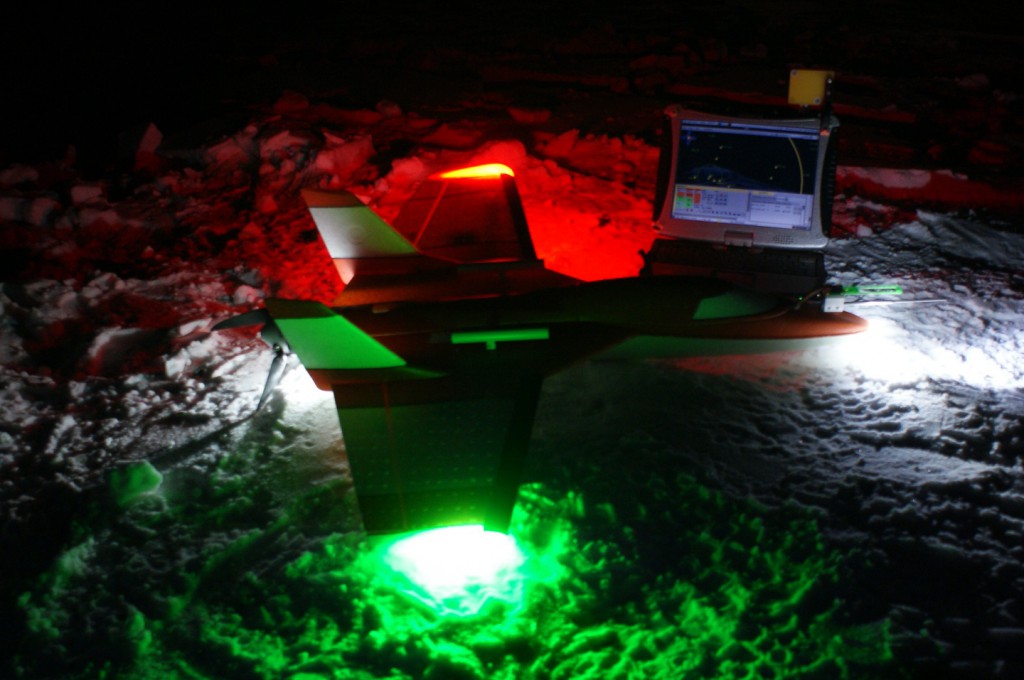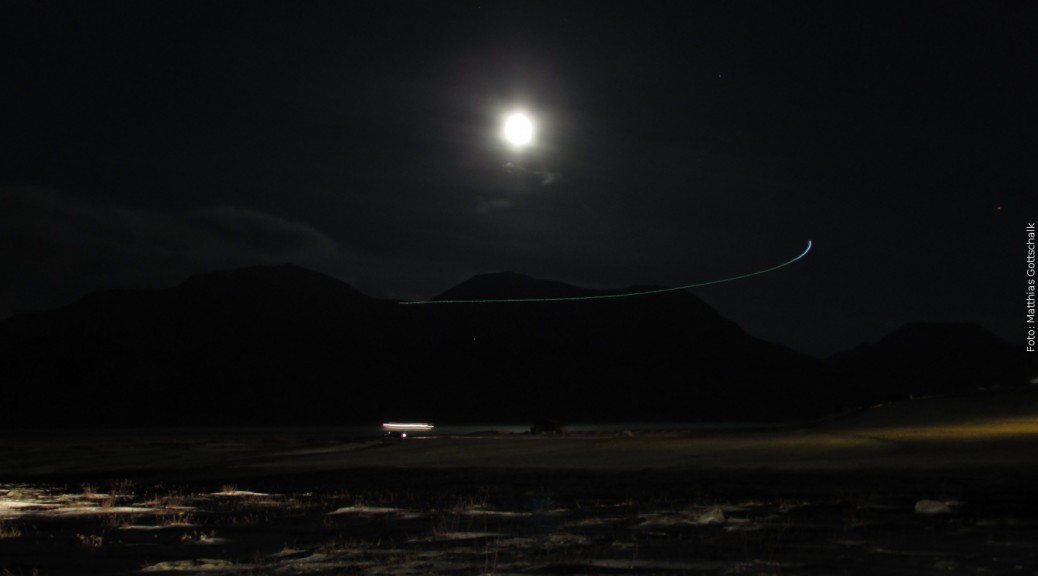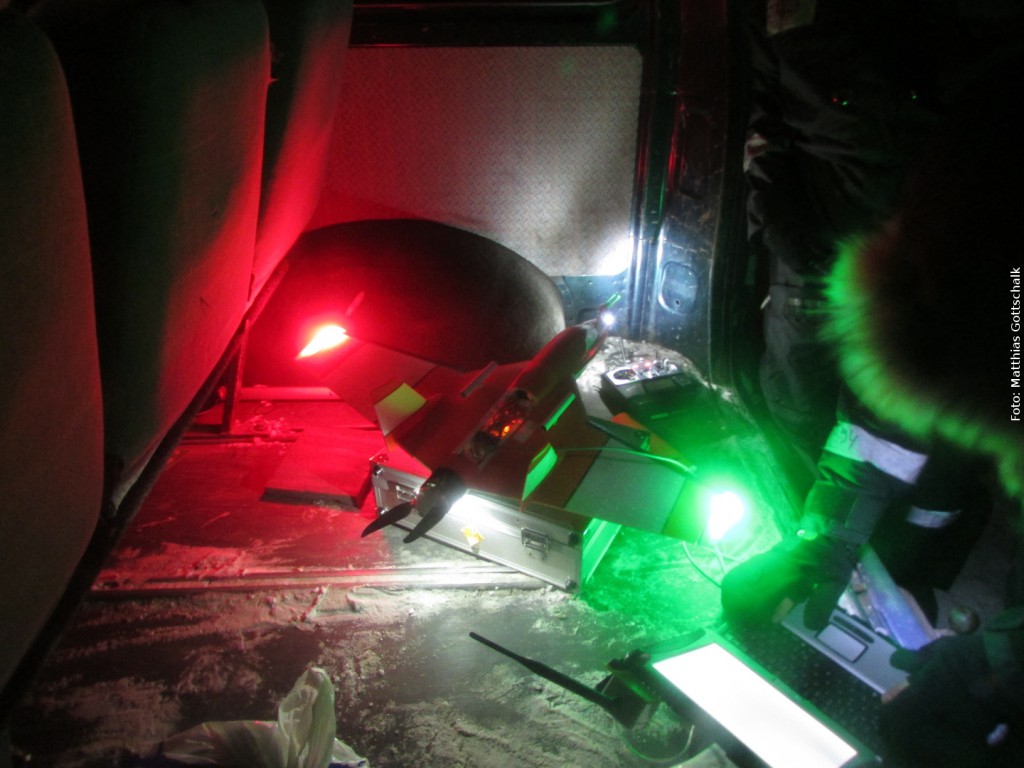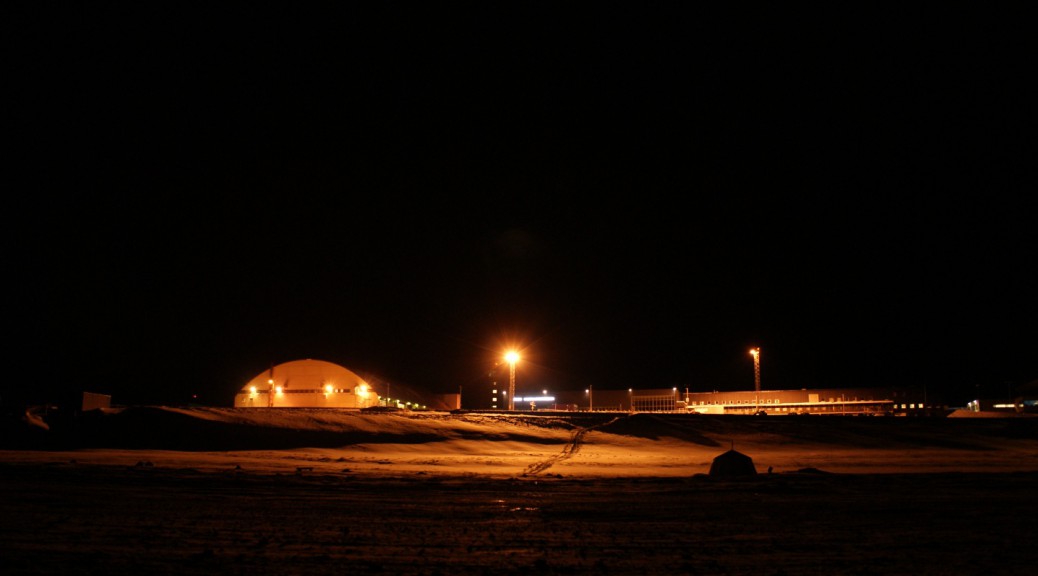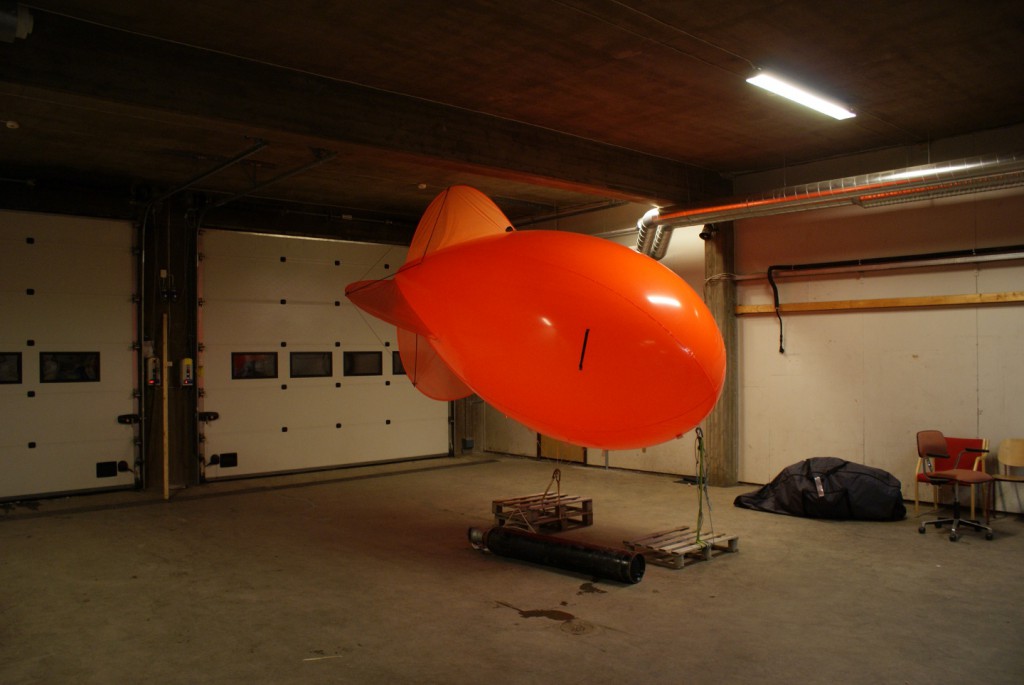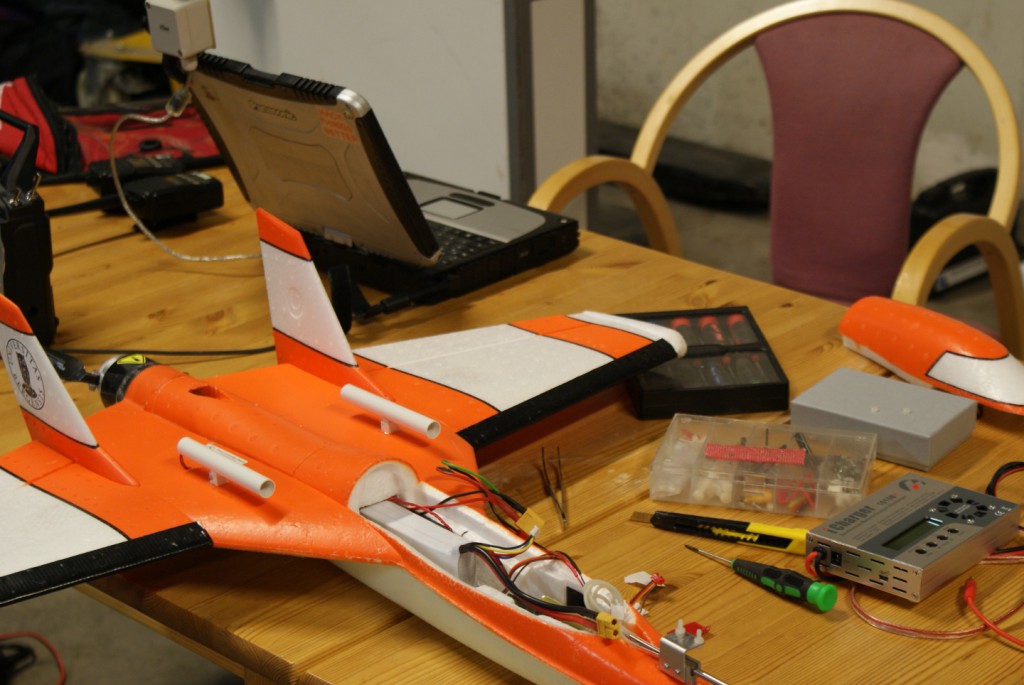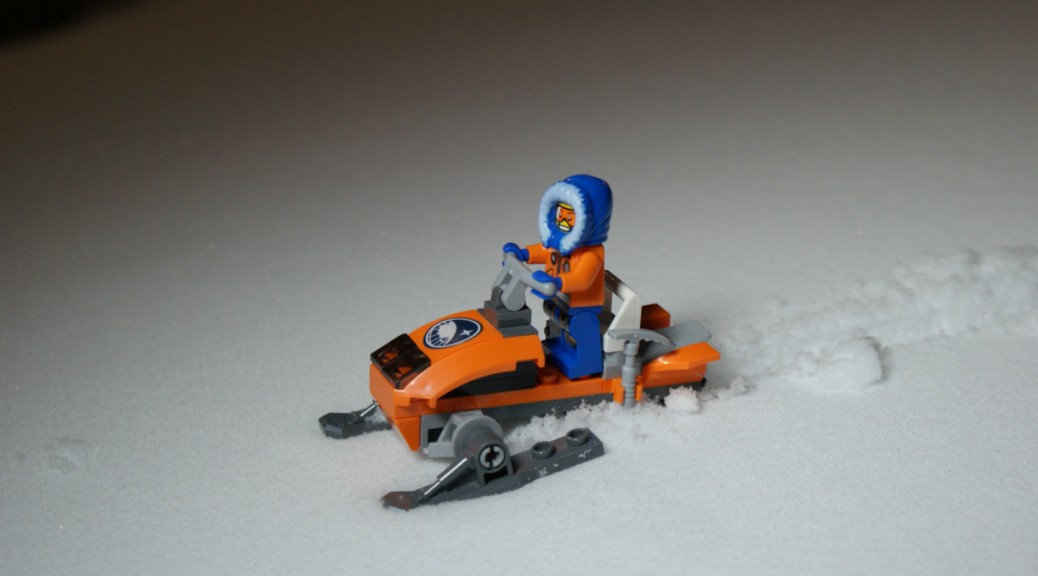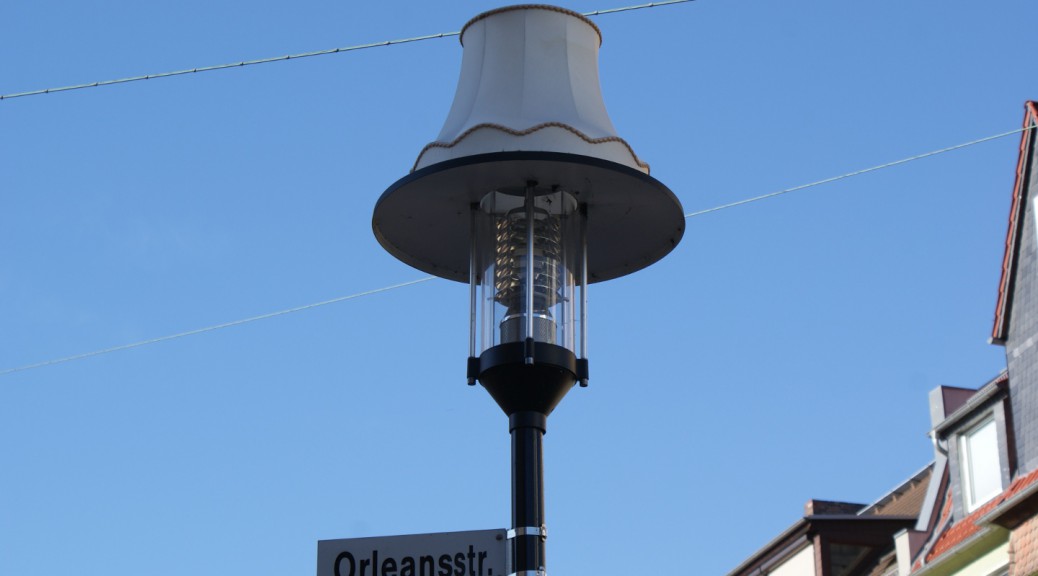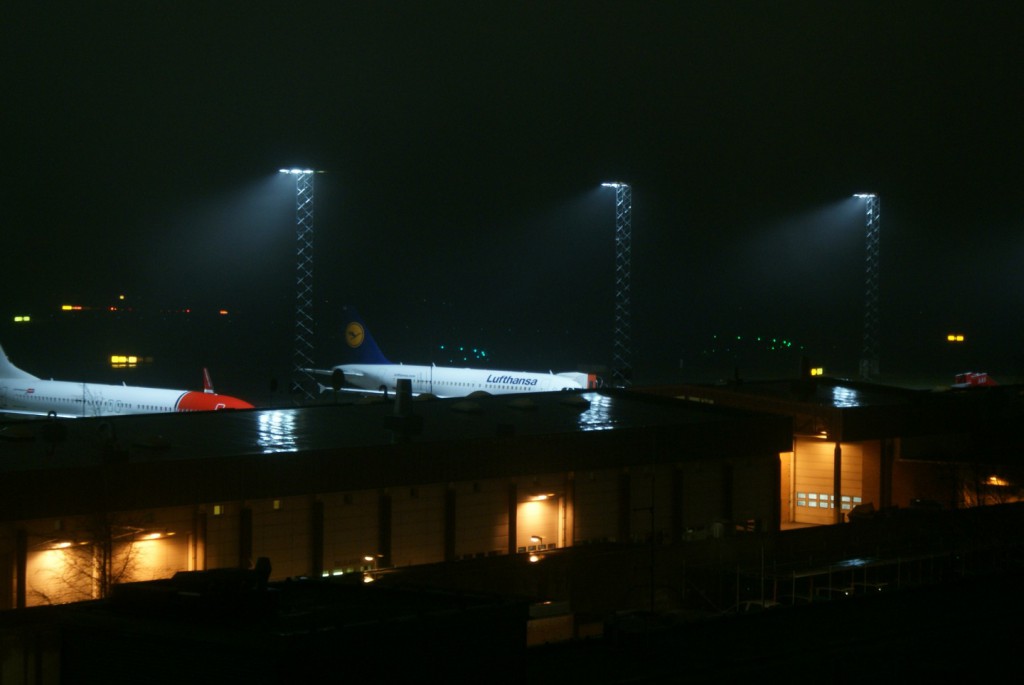It was getting warmer throughout the week. Air temperature is around 0°C and it rains on Saturday. That is unusual. The snow surface is quickly covered by ice and everything becomes slippery. The meteorologists had predicted that, we sleep late. The missing sun is really missing on weekends.
We discuss the situation in the evening. The wind is extremely gusty. The aircraft could take off and fly but the landing would be risky in the lee of the mountains. Especially for the important 5-hole probe and the platinum wire thermometer. The “normal” sensors for temperature, humidity, pressure and wind estimation are not enough.
The tethered balloon can ascend only with little wind anyway. So we put everything together and leave. The lead-acid batteries at the measuring masts are changed. The three-dimensional wind speed is measured using finger-shaped ultrasonic transmitters/receivers that are installed pointing at each other.
We meet at UNIS around noon (an awesome building) and start to pack. Logistics were an important part of the measurement campaign. Many people, equipment and clothing needed to be transported here, then brought back and forth.
The autopilot controlled the aircraft reliably the entire week and data was collected. That is now being worked on. We took off and landend manually as we always do. This allows to gradually enable/test the autopilot and have a precise landing next to the street near the ground station. Every step counts in the snow.
We have to stay in Oslo over night. In the morning the sun rises above the clouds over the Baltic Sea. So bright.

